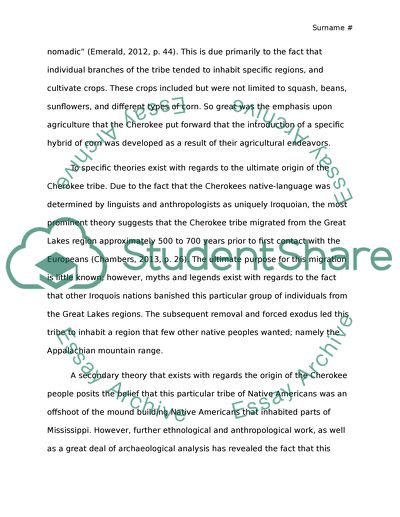Cite this document
(“The Cherokee People Research Paper Example | Topics and Well Written Essays - 1500 words”, n.d.)
Retrieved from https://studentshare.org/anthropology/1496145-the-cherokee-people
Retrieved from https://studentshare.org/anthropology/1496145-the-cherokee-people
(The Cherokee People Research Paper Example | Topics and Well Written Essays - 1500 Words)
https://studentshare.org/anthropology/1496145-the-cherokee-people.
https://studentshare.org/anthropology/1496145-the-cherokee-people.
“The Cherokee People Research Paper Example | Topics and Well Written Essays - 1500 Words”, n.d. https://studentshare.org/anthropology/1496145-the-cherokee-people.


